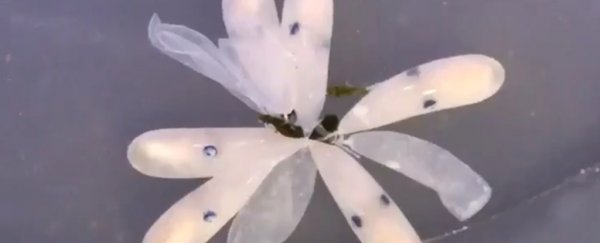Most of us won't ever get to see a baby octopus hatching in the wild, but luckily Virginia Aquarium managed to film it happening in captivity, and have share it online for everyone to enjoy.
In a remarkable 10-second video posted to Facebook and Twitter, a single tiny Caribbean reef octopus (Octopus briareus) is shown wriggling free of a small cluster of eggs.
Almost immediately its pigment changes from white to dark brown.
According to Virginia Aquarium, this is totally normal - all the baby octopuses they observed went through this rapid pigment change immediately after hatching.
You can watch the amazing video below:
ICYMI: Your daily squee has arrived. #octobabies pic.twitter.com/D9e5T5bkun
— Virginia Aquarium (@VAAquarium) February 7, 2018
However, we're not entirely sure why this happens. The staff hypothesise it may have something to do with how pigment-containing cells called chromatophores are triggered at birth.
"It seemed like the stress of hatching caused the chromatophores to fire almost immediately before settling down," an aquarium spokesperson wrote on Twitter.
"After the initial hatch they did calm back down. Once they landed in the hatchling aquarium, they began utilising their chromatophores more normally and working to blend in with the exhibit."
The Caribbean reef octopus doesn't grow as large as some other octopuses, with a mantle up to 12 centimetres (4.7 inches) and arms up to 60 centimetres (2 feet) long.
It's also incredible at hiding, able to change both the colour and the texture of its skin to blend into its surroundings.
This species can lay over 100 eggs in a single clutch to try and ensure at least one baby survives, the aquarium noted on Facebook.
Several of the eggs laid by the aquarium's octopus have hatched, and they are currently being reared in a behind-the-scenes nursery by animal care staff until they're ready to be seen by the public.
